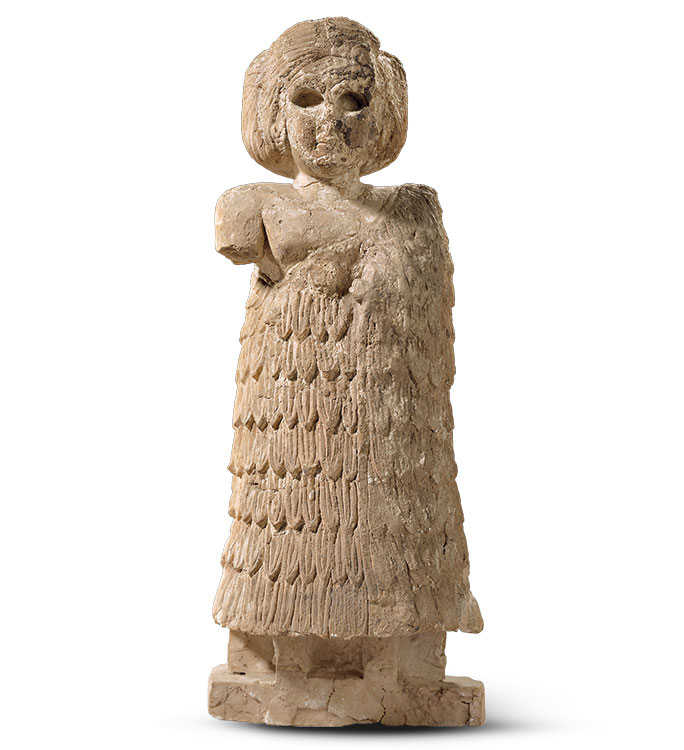
This statue once stood in the Ishtar Temple at Assur, the first Assyrian capital. The damage the figure has sustained since then reflects her history. Among other events, she witnessed the early days of Assur, the collapse of the Neo- Assyrian Empire in the seventh century BC, and the German excavations of the early twentieth century. While en route to Berlin during the First World War, this statue and other finds from Assur were confiscated by Portuguese forces and later exhibited in Lisbon, Portugal. They ultimately reached Berlin and were installed in the Pergamon Museum, where the statue survived heavy bombardments carried out by the Allied forces in the Second World War.
Standing female figure
Mesopotamia, Assur (modern Qal’at Sherqat), Ishtar Temple, level G, cella
Early Dynastic IIIb period, ca. 2400 BC
Alabaster
Staatliche Museen Zu Berlin, Vorderasiatisches Museum, Excavated 1913; VA 08144
© Staatliche Museen zu Berlin-Vorderasiatisches Museum. Foto: Olaf M. Teßmer.
Sidney Babcock: Though this statue sustained significant damage during the fall of the Neo-Assyrian Empire and both World Wars, it has survived with a few details intact including the woman’s mouth, rounded cheeks, and large eyes that were initially inlaid with semiprecious stones. Due to the dimensionality of this object, its material, and the artist’s skill, the extraordinary texture of this woman’s woven garment comes to life. It ignites a sensory curiosity about the feel and motion of her clothing. The careful articulation of the strands of her abundant hair also contributes to the allusion of texture. Like similar votive statues, this female figure once stood on a pedestal, but it has been broken off along with her feet. Yet her devotion to Ishtar endures through the ages as the angle of her neck and chin seemingly pull her forward, her gaze fixed on the divine.
